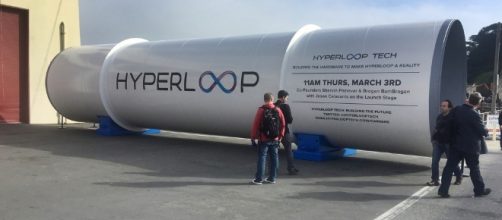Nearly two decades into the 21st Century, the march of technological advancement continues. Many times this is reflected in things that are small in size – smartphones, laptops and so on. Other times the signs of progress are in larger objects like means of transportation. Speedy yet affordable electric cars are one example; another is the development of high-speed mass transportation. This is most evident in the development of a practical hyperloop system. Such a concept has been undertaken by multiple startups ever since Elon Musk had his companies Tesla and SpaceX work together on an open-source design for the tech.
One of these, Hyperloop One, may have finally proven that such a method of travel can work after their recent test run, USA Today reported.
Vacuum tube ride
Hyperloop One, a company founded by Shervin Pishevar and based in Los Angeles, successfully took their prototype passenger-carrying travel pod on a zippy trial run through their test hyperloop tube outside of Las Vegas this July 29. The Hyperloop One pod was loaded into its travel tube, a vacuum-sealed above-ground track 500 meters long, where it was started up to go through the whole distance by means of magnetic levitation. In accordance with the hyperloop principle, the pressurized tube removed air resistance enough for the pod to accelerate to a maximum speed of 192 miles per hour.
The hyper-loop system had already been tested by Hyperloop One back in May, although that time the travel pod was not pushed to its upper limit. When running at full clout, the pod’s speed was recorded as being three times that of its earlier, shorter test run. In the latest test, the developers depressurized the vacuum tube to the same pressure as 200,000 in the air. Coupled with the electrical horsepower of the pod’s maglev engine (3,100hp), that is some insane speed that no surface train could match. Hyperloop One announced the success of this full-power run this Wednesday, August 2.
Hyper-loop system works
With the successful test of Hyperloop One’s sample track and vacuum pod, the possibilities of developing the concept as a new means of mass high-speed transportation are made more concrete.
The company’s chairman and co-founder Shervin Pishevar was optimistic when he announced during the trial run, "This is the dawn of the age of commercialization for the hyper-loop.” Hyperloop One CEO Rob Lloyd also offered his remarks on the positive turnout of the test saying, "We've proven that our technology works,” USA Today reported.
Despite this momentous breakthrough, there are still plenty of hurdles for the hyper-loop system to become commercialized. The development of sturdy pressurized tubes for the transport to run on is a paramount concern, so is assuring potential passengers that moving up to 700 mph will not be dangerous. Pishevar is excited over the next step of their development. "This is the beginning, and the dawn of a new era of transportation," he noted in a statement.


